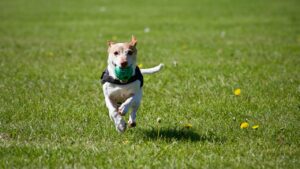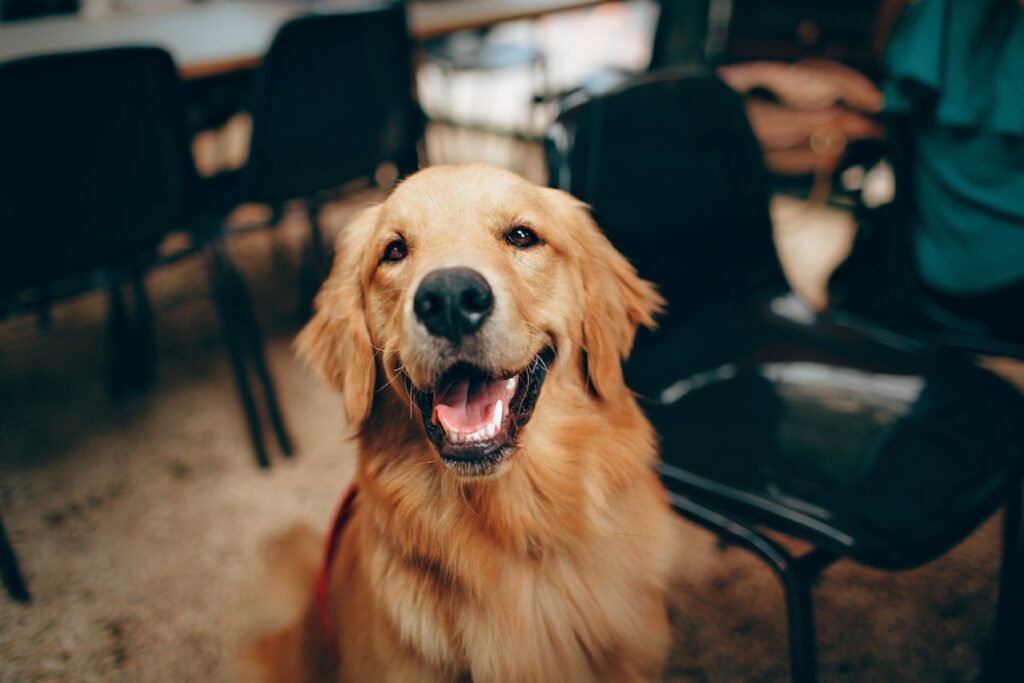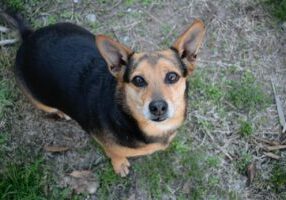A Guide to Easing Your Dog’s Anxiety During Walks – Learn How to Ease Dog Anxiety on Walks and Make Walks More Enjoyable for Both You and Your Dog
Are you looking for ways to help your anxious pup have a more enjoyable walk? It can be challenging to try and ease your dog’s anxiety while out on a walk, especially if they are scared of other dogs, traffic, or even strangers. Thankfully, there is hope! In this article, we will teach you how to ease dog anxiety on walks and cover some practical tips and tricks that can help make walks with your four-legged friend more enjoyable for you and them.
From practising desensitising exercises at home to using treats and rewards during the walk, we’ll provide all the information you need to know to make your pet feel secure when out in public.
With these helpful strategies, you’ll be able to take the stress out of walking with your furry pal and make it a gratifying experience for both of you!
Why Dogs Get Anxious During Walks


The Reasons Behind Anxiety
Dogs can experience anxiety during walks due to many different reasons. One potential cause is a lack of proper training or socialisation. If you have yet to train your dog to walk correctly on a leash, it can be difficult for them to stay calm and collected when other dogs, people, or animals are around.
Additionally, if you have not exposed your dog to different environments or unfamiliar sounds and sights, it may become easily overwhelmed when walking.
Fearful Responses and Reactions
When a dog experiences fear during their walk, they may display signs of anxiety such as trembling, quivering, excessive barking, lip licking and yawning. They may also try to escape by pulling and straining against the leash. These responses are part of the natural “fight-or-flight” response that all animals have when faced with danger or a potential threat.
Overstimulation in New Environments
Another possible reason why dogs get anxious on walks is that their senses are overloaded with new stimuli. With so many new smells and sounds around them, as well as strange people and animals that they don’t know, it can be too much for some dogs to handle.
This type of overstimulation could lead to heightened levels of stress and anxiety in some dogs, which could manifest through visible signs like panting or pacing back and forth nervously.
Physical Health Issues
In some cases, the source of the anxiety may not be behavioural at all but rather physical health issues like pain or discomfort caused by arthritis or hip dysplasia.
If your dog is showing signs of pain while out on walks, this could be an indication that something is wrong medically; you should contact your veterinarian for further examination.
The Benefits of Exercising Regularly
Even though some dogs experience anxiety during walks, it’s still important to exercise regularly with them to keep them physically and mentally healthy.
Regular exercise helps keep their muscles strong and prevents boredom which can lead to behavioural problems such as destructive chewing or incessant barking. Not only does exercise help keep your pup healthy and serves as quality bonding time between you both, which helps build trust between you two!
How to Ease Dog Anxiety on Walks
If your pup gets nervous or scared while walking outside, here are a few tips to help ease their anxiety:
Create a Positive Environment
The first step is to create a positive walking environment for your dog. Start by familiarising your dog with its leash and harness in the house. Always wear these items when you’re ready to go for a walk. Give your pup lots of praise and treats when they wear them correctly. Avoid areas that trigger fear, such as high-traffic roads near the home or construction sites.
Encourage Calm Behaviour
When your dog starts showing signs of anxiousness during walks (such as panting heavily or trying to hide), it’s vital to encourage calm behaviour. Positive reinforcement techniques such as praising a calm demeanour and rewarding it with treats help reinforce this behaviour in the long term. You can also try distraction techniques such as playing games like fetch or tug-of-war if your pup gets distracted easily during walks. This will help keep their focus on something other than their anxiety during stressful situations outside.
Exercise Patience & Consistency
Finally, it’s important to remember that desensitising your pup to outside triggers will take time and patience. It may take several weeks or even months before they feel more comfortable walking outdoors, so be sure to have realistic expectations and stay consistent with the process! Here are a few additional tips that can help:
Ways To Help Your Dog Feel Comfortable On Walks:
- Start by walking around the neighbourhood for short periods at first (10 minutes max). You can gradually increase distance and duration each week until they become more comfortable outdoors.
- Incorporate plenty of playtime into each walk – find games like fetch or tug-of-war that will help distract your pup from potential triggers in their environment.
- Keep an eye out for possible triggers – if you see things that cause your pup stress (such as cars driving past), use positive reinforcement techniques like verbal praise and rewards to keep them calm in those moments.
Things To Avoid During Walks:
- Don’t let them off leash unless they are comfortable walking in public places without one – this could put you and your pet at risk!
- Avoid areas with loud noises, like construction sites or fireworks displays – these can be overwhelming for anxious pups!
- Don’t rush through walks – instead, allow plenty of time for rest stops (if needed), so they don’t become overwhelmed by all the activity around them!
How to Ease Dog Anxiety on Walks – Wrap Up
Like most dog owners, you probably dread taking your pup for a walk because of their anxiety. However, with a few simple tips, you can ease your dog’s anxiety and make your walks more enjoyable!
We have provided you with all the information you need to know to make your pet feel secure in public. With these helpful strategies, you’ll be able to take the stress out of walking with your furry pal and make it a delightful experience for both of you!
Just like with any other family member, it’s essential to have insurance for your dog in case of an emergency. And luckily, there are a variety of pet insurance plans available that can fit any budget. So don’t wait – make sure your furry friend is insured with furrr.co.uk today!










